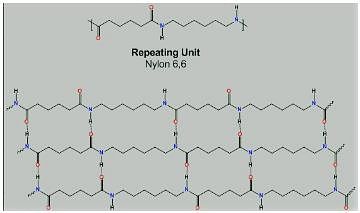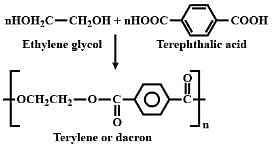NEET Exam > NEET Tests > NCERT Based Tests for NEET > Test: Addition & Condensation Polymers (Old NCERT) - NEET MCQ
Test: Addition & Condensation Polymers (Old NCERT) - NEET MCQ
Test Description
10 Questions MCQ Test NCERT Based Tests for NEET - Test: Addition & Condensation Polymers (Old NCERT)
Test: Addition & Condensation Polymers (Old NCERT) for NEET 2024 is part of NCERT Based Tests for NEET preparation. The Test: Addition & Condensation Polymers (Old NCERT) questions and answers have been
prepared according to the NEET exam syllabus.The Test: Addition & Condensation Polymers (Old NCERT) MCQs are made for NEET 2024 Exam. Find important
definitions, questions, notes, meanings, examples, exercises, MCQs and online tests for Test: Addition & Condensation Polymers (Old NCERT) below.
Solutions of Test: Addition & Condensation Polymers (Old NCERT) questions in English are available as part of our NCERT Based Tests for NEET for NEET & Test: Addition & Condensation Polymers (Old NCERT) solutions in
Hindi for NCERT Based Tests for NEET course. Download more important topics, notes, lectures and mock
test series for NEET Exam by signing up for free. Attempt Test: Addition & Condensation Polymers (Old NCERT) | 10 questions in 15 minutes | Mock test for NEET preparation | Free important questions MCQ to study NCERT Based Tests for NEET for NEET Exam | Download free PDF with solutions
Detailed Solution for Test: Addition & Condensation Polymers (Old NCERT) - Question 1
Test: Addition & Condensation Polymers (Old NCERT) - Question 2
A synthetic polymer which resembles natural rubber is:
Detailed Solution for Test: Addition & Condensation Polymers (Old NCERT) - Question 2
| 1 Crore+ students have signed up on EduRev. Have you? Download the App |
Test: Addition & Condensation Polymers (Old NCERT) - Question 3
Which type of polymer will be formed if the susbstituent group is –C6H5
Detailed Solution for Test: Addition & Condensation Polymers (Old NCERT) - Question 3
Test: Addition & Condensation Polymers (Old NCERT) - Question 4
Vulcanisation is used in processing of:
Detailed Solution for Test: Addition & Condensation Polymers (Old NCERT) - Question 4
Detailed Solution for Test: Addition & Condensation Polymers (Old NCERT) - Question 5
Detailed Solution for Test: Addition & Condensation Polymers (Old NCERT) - Question 6
Test: Addition & Condensation Polymers (Old NCERT) - Question 7
Which intermolecular force is present in Nylon 6,6?
Detailed Solution for Test: Addition & Condensation Polymers (Old NCERT) - Question 7
Test: Addition & Condensation Polymers (Old NCERT) - Question 8
Polymers having ester linkage are called:
Detailed Solution for Test: Addition & Condensation Polymers (Old NCERT) - Question 8
Detailed Solution for Test: Addition & Condensation Polymers (Old NCERT) - Question 9
Test: Addition & Condensation Polymers (Old NCERT) - Question 10
Condensation polymerisation of ethylene glycol and terepthalic acid gives:
Detailed Solution for Test: Addition & Condensation Polymers (Old NCERT) - Question 10
|
748 tests
|
Information about Test: Addition & Condensation Polymers (Old NCERT) Page
In this test you can find the Exam questions for Test: Addition & Condensation Polymers (Old NCERT) solved & explained in the simplest way possible.
Besides giving Questions and answers for Test: Addition & Condensation Polymers (Old NCERT), EduRev gives you an ample number of Online tests for practice




















